Burmese pythons are one of the longest and heaviest snake species in the world. With an average length of 12 ft. long, and a maximum length of possibly 23 ft., these are some immense snakes!
These reptiles are native to south and southeast Asia, but have been introduced as an invasive species in Florida. Particularly in south Florida, this invasive species has become a major threat to native animal populations, including foxes, rabbits, raccoons, deer, alligators, coyotes, and Florida panthers. Read on to learn about the Burmese python.
Description of the Burmese Python
Burmese pythons have dark colored scales with brown blotches and lighter borders across their entire bodies. The patterns are similar to those found on giraffes. In the wild they are usually no longer than 12 ft. long, and individual animals longer than 13 ft. are very uncommon. The longest verified length recorded was a captive snake, which grew to 18 ft. 10 in., but there have been reports of longer snakes.
Interesting Facts About the Burmese Python
These massive snakes are skilled predators, and this leads to problems for native species in their invasive range. Read on to learn more about these immense creatures.
- Natural Disaster – The invasion of these snakes in Florida began as a result of the pet trade. The original establishment of invasive populations can be traced back to hurricane Andrew in 1992, when a python breeding facility was destroyed. The escapees are the ancestors of the estimated 100,000 pythons currently invading the Everglades.
- Pet Peeve – Another source of invasive snakes are household pets. These snakes are purchased while they are small, and when the owner realizes they cannot care for their quickly growing companion they release them into the wild. Unfortunately, these snakes survived and thrived in Florida’s habitats and are breeding and spreading.
- No Venom Here – These snakes are not venomous species. Instead they utilize multiple teeth, allowing them to grip their prey well. After they have grabbed ahold of their meal, they coil around it and squeeze! This is called using constriction to kill prey.
- Motherly Love – Unlike many other reptiles, these snakes incubate their eggs using their bodies. While most reptiles will bury their eggs, letting the sun and vegetation do their incubation for them, pythons use their muscles. Females will actually rapidly twitch their muscles to increase temperature, similar to how we shiver.
Habitat of the Burmese Python
Burmese pythons are not aquatic snakes, but they are very good swimmers. Their favorite habitats are in close proximity to permanent water sources. This preference for watery habitats makes them perfectly suited for a Florida environment.
They can commonly be found in swamps, wetlands, grasslands, marshes, woodlands, juggles, rocky foothills, and river valleys. These types of habitats are found in both their native range in Asia, and their invasive range in Florida.
Distribution of the Burmese Python
In their natural range, these reptiles are found in south and southeast Asia. They are native to eastern India, Sumbawa, Nepal, Bali, Bhutan, Sulawesi, Bangladesh, Indonesia, Myanmar, Hong Kong, Thailand, China, Laos, Malaysia, Cambodia, and Vietnam.
In their invasive range in Florida, they are found most frequently in south Florida, particularly in the Florida Everglades. Populations have also been found in north Florida and the Florida panhandle.
Diet of the Burmese Python
These reptiles will eat just about any animals they can sink their teeth into. They are carnivores, which means that they feed on meat and virtually no plant matter. It is not uncommon to find snakes near human habitation simply because of an increased vermin (and thus prey) population.
Prey species depends greatly on their size. Smaller snakes will eat rats, mice, rabbits, birds, and other appropriately sized prey. Larger individuals will feed on pigs, goats, deer, and even alligators.
Burmese Python and Human Interaction
In their wild range, these creatures are actually considered Vulnerable by the IUCN Red List. Habitat destruction reduces population numbers, but illegal capture for the pet trade is even more detrimental. In many places in the United States it is illegal to own this species of snake as a pet. These reptiles are also captured and killed for their meat and skin, which is used in the leather market.
Domestication
Though captive breeding populations and selective breeding has occurred in the pet trade, this species has not been undergoing change for long enough to be considered domesticated.
Does the Burmese Python Make a Good Pet
For the most part, these snakes do not make good pets. Only a seasoned expert with all the correct permits and licenses can or should legally own this species. They can grow quite large, and while they are not extremely dangerous to humans, housing such a lengthy snake can prove to be difficult.
Burmese Python Care
In a zoological setting, these large reptiles must be provided with adequate housing space. Their natural habitats have very high humidity, and their enclosures much match this environment for the animal to stay healthy.
The temperature in their habitat must remain in the mid-80s F, and they should be provided with a light source and heat pad. It is also important to keep a temperature gradient within the enclosure so the snakes have the option of choosing the optimal temperature themselves. Perhaps the most important aspect of their enclosure is ensuring that it is secure, to ensure the snake cannot escape.
Behavior of the Burmese Python
For the most part, these reptiles are solitary creatures. They will only interact with one another for the sake of breeding. Most of their hunting occurs at night, and they bask in the sun during the day.
As ambush predators, they spend most of their time hiding in the underbrush waiting for prey to come to them. When temperatures get very low in the winter they will greatly reduce their activity level and go into a pseudo-hibernation called brumation.
Reproduction of the Burmese Python
After breeding, females will lay between 12 – 36 eggs, usually in March or April. She will incubate her eggs using her body. Twitching her muscles can effectively increase the ambient temperature around the eggs. After they hatch, she will leave the young snakes to fend for themselves. Incubation times are usually around 60 days, but can vary by individual.


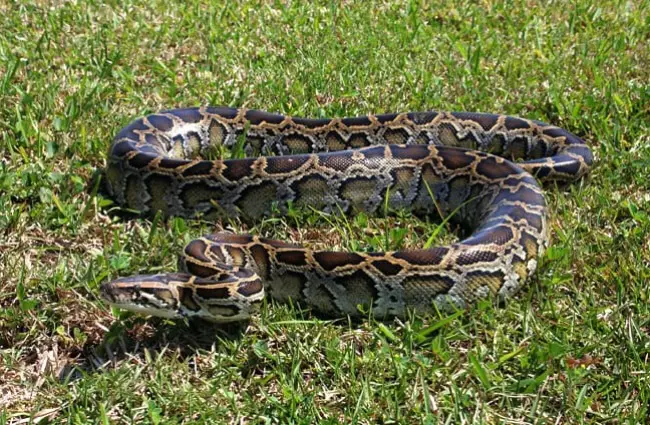

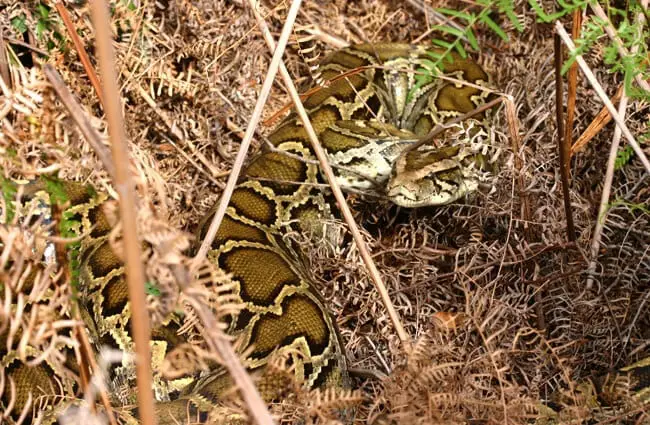

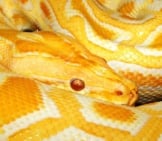
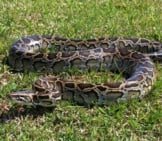
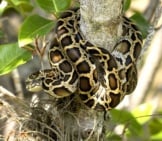
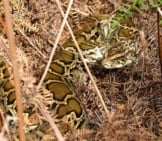
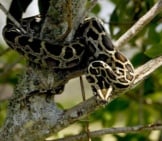
![Red Angus Closeup of a beautiful Red Angus cowPhoto by: U.S. Department of Agriculture [pubic domain]https://creativecommons.org/licenses/by/2.0/](https://animals.net/wp-content/uploads/2020/03/Red-Angus-4-238x178.jpg)












![Red Angus Closeup of a beautiful Red Angus cowPhoto by: U.S. Department of Agriculture [pubic domain]https://creativecommons.org/licenses/by/2.0/](https://animals.net/wp-content/uploads/2020/03/Red-Angus-4-100x75.jpg)

